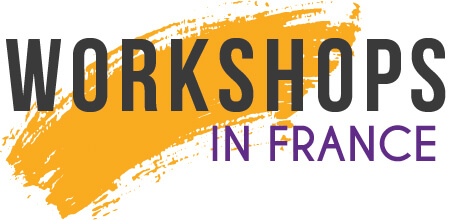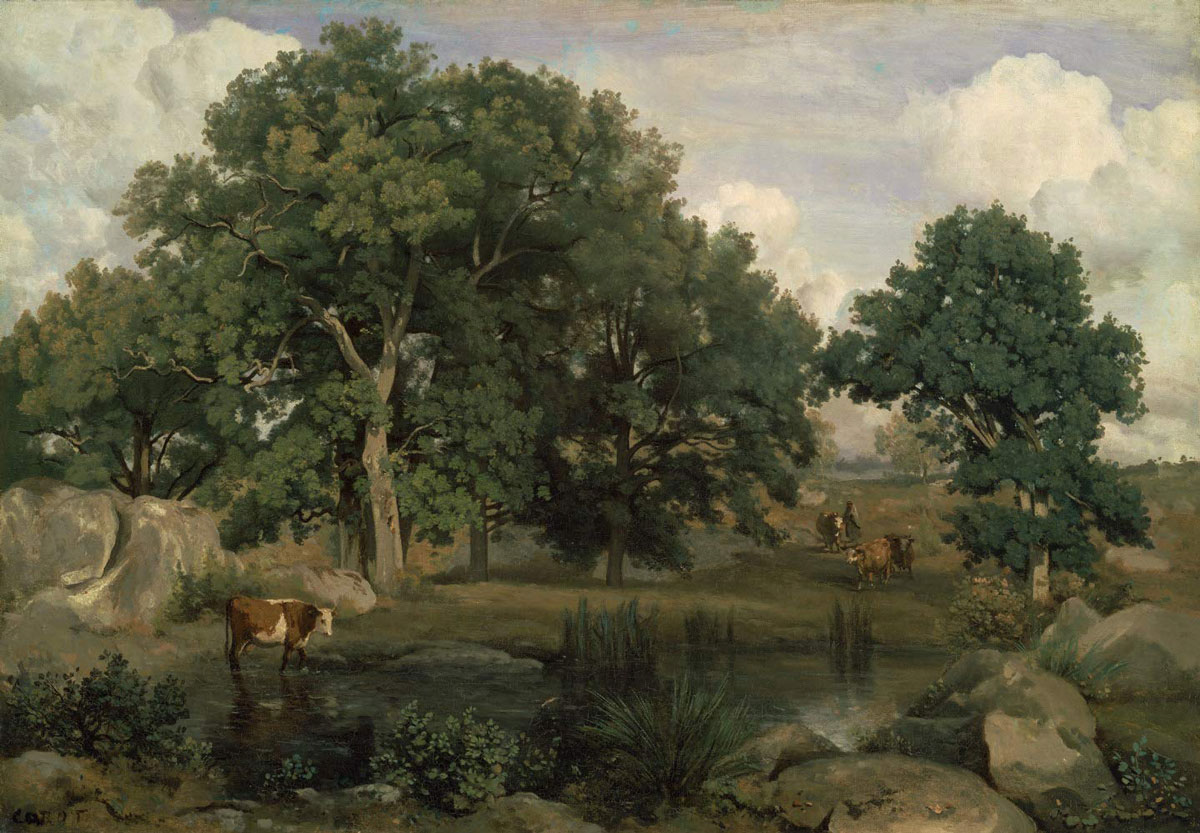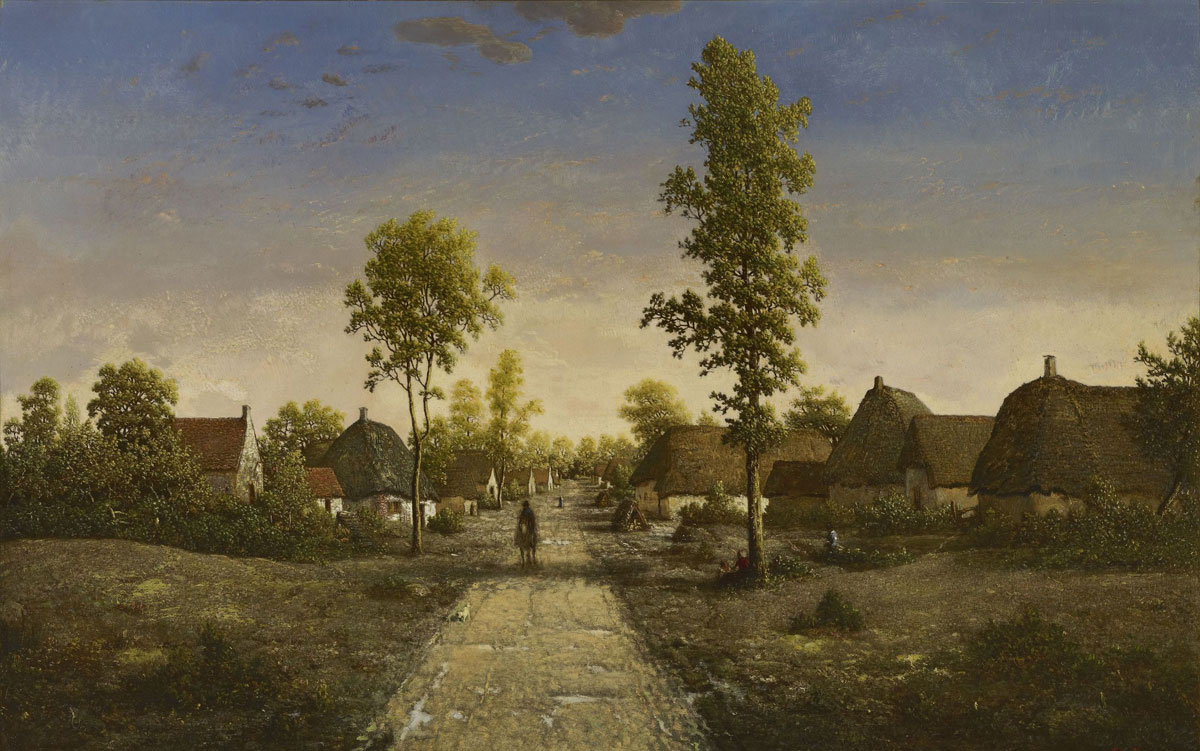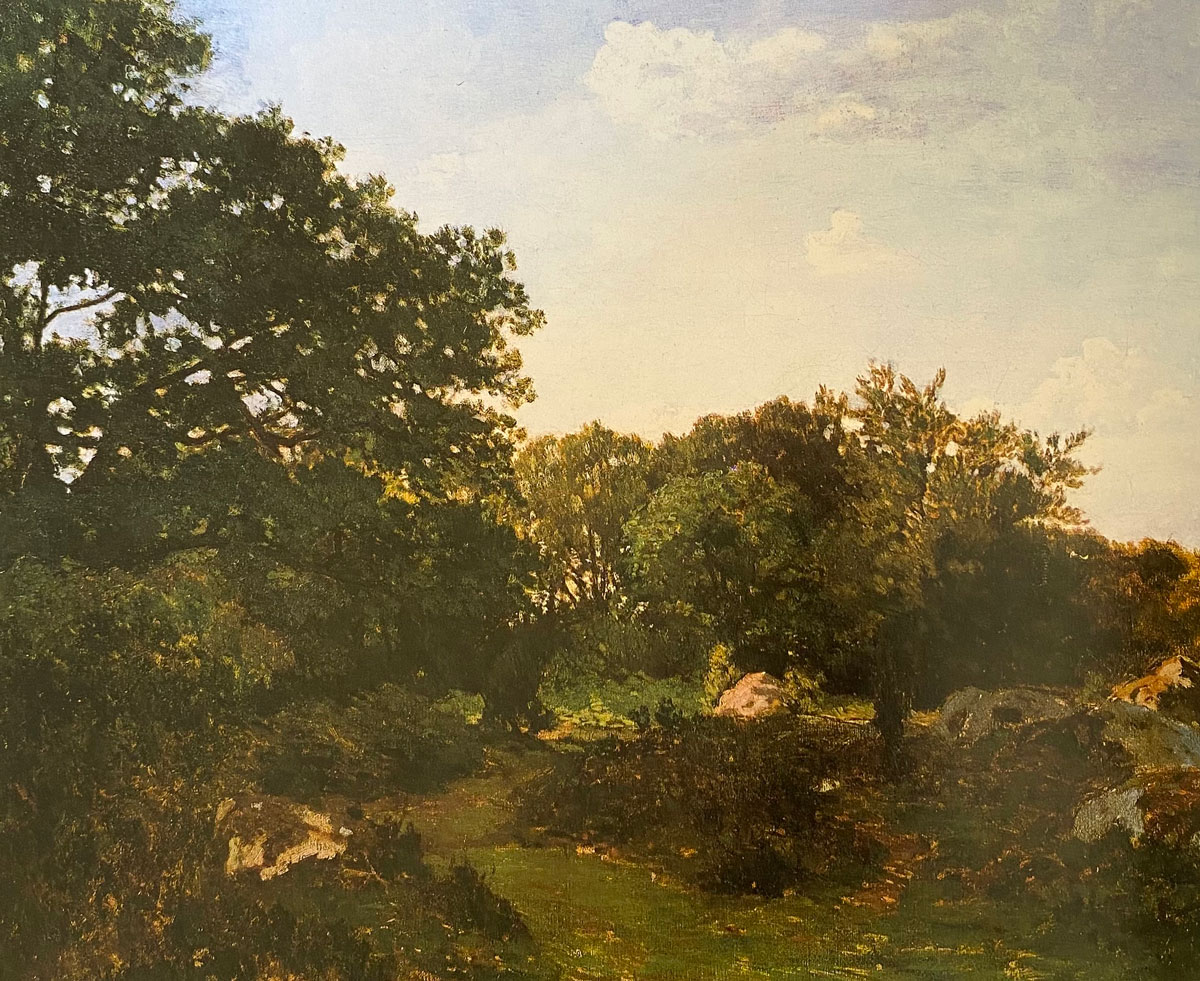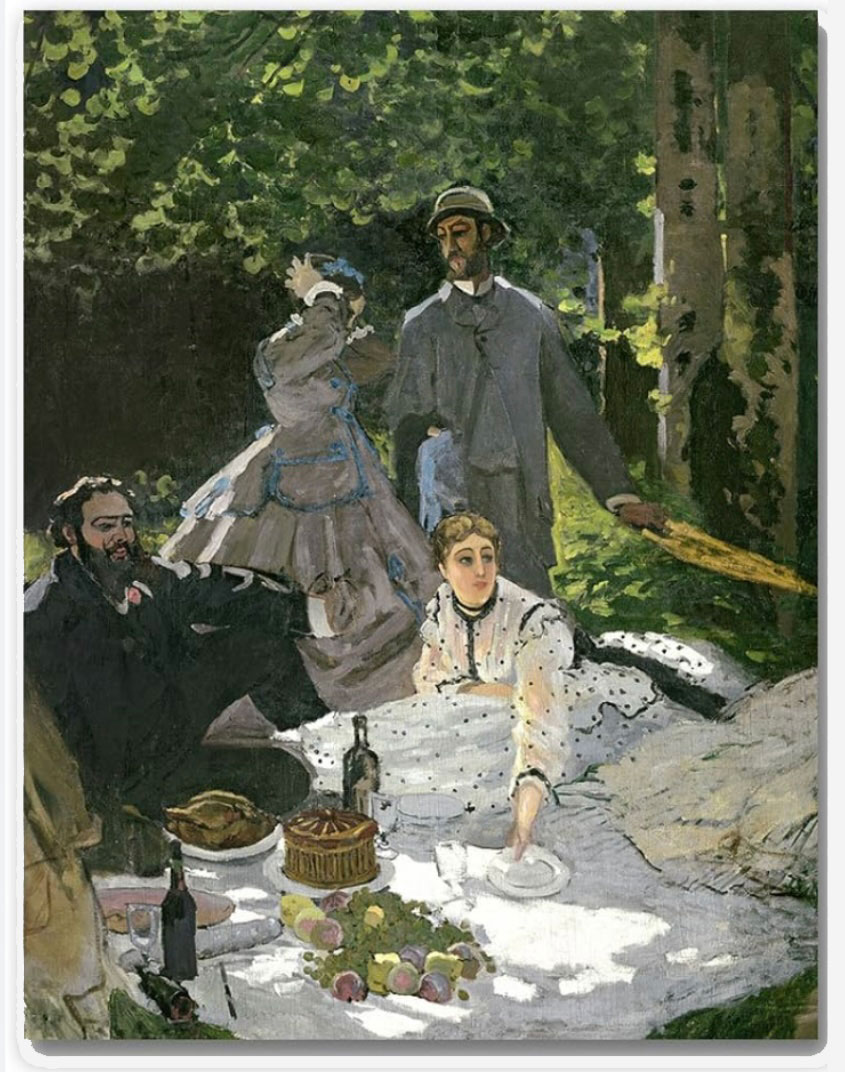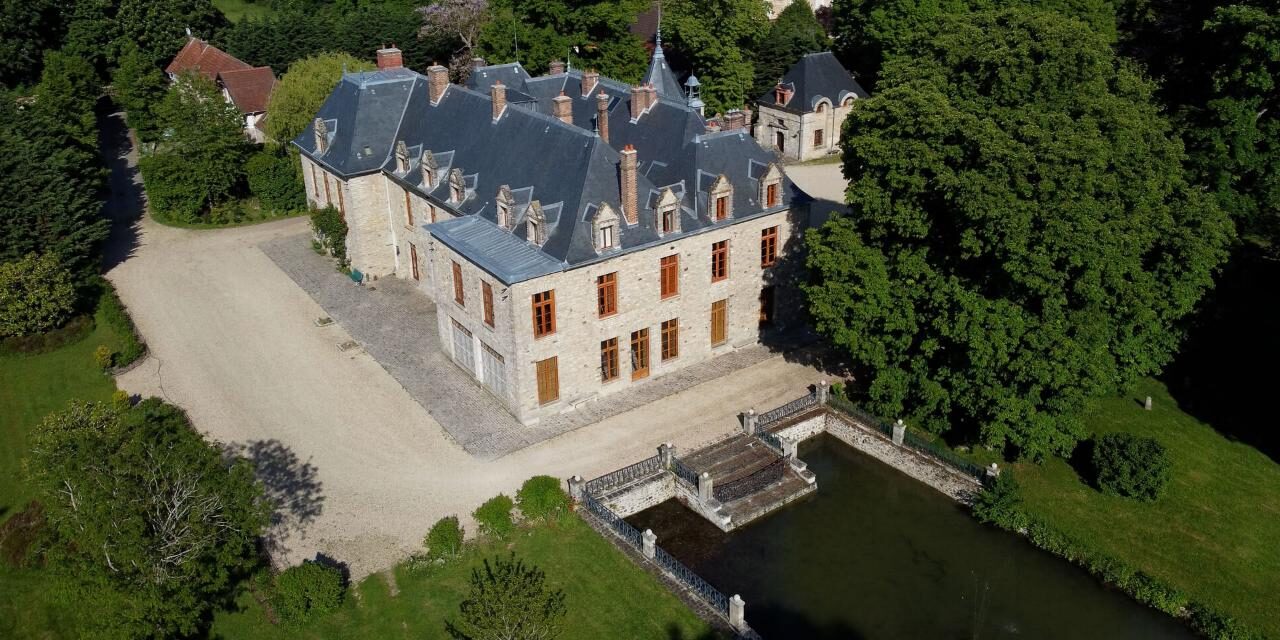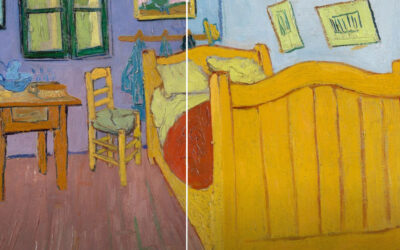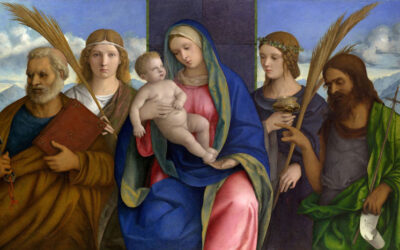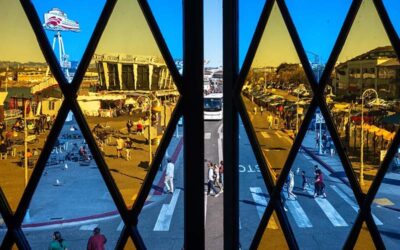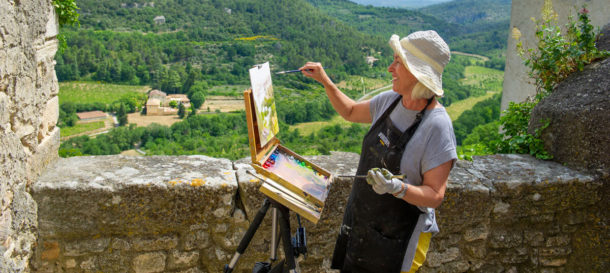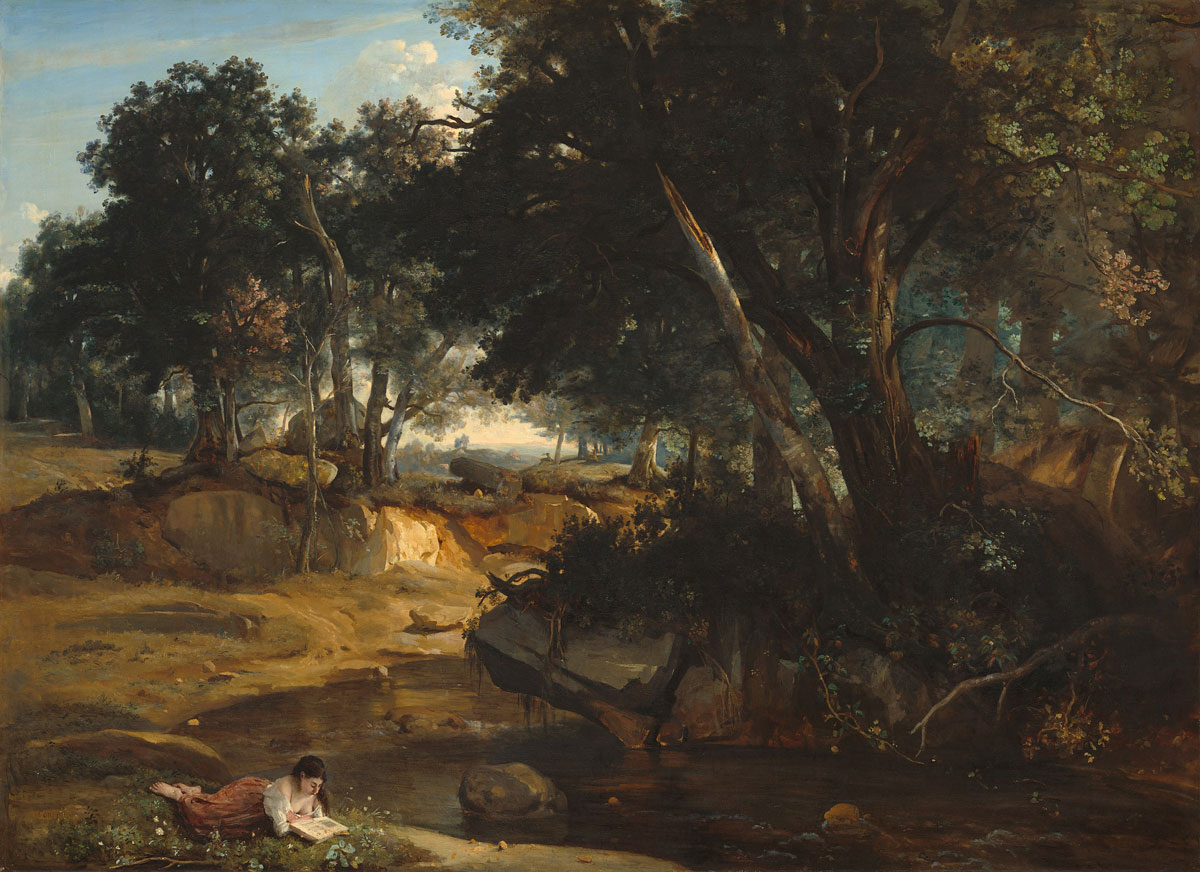
Jean-Baptiste-Camille Corot, View of the Forest of Fontainebleau (1830)
How the Artists of the Forest of Fontainebleau Opened the Door to Impressionism
By: Vanessa Françoise Rothe
Impressionist landscape paintings are among the most widely known and appreciated works of art ever created. But what kind of work was being created right before Impressionism began… and what happened in the 1860’s in the Fontainebleau forest south of Paris, that shaped the art genres and even the French culture that we know and love today?
Classical Realism. The Salon and the Académie des Beaux-Arts.
First, we need to understand what was going on in the Paris art scene at that time. Classical and traditional art schools were popular. The principal school of fine art in Paris, was The Académie des Beaux-Arts, and together with many independent atelier schools, they were focused on Classical Realism. The Salon, France’s largest and most important juried art exhibition took place annually at the Louvre, and artists absolutely needed to have their work shown there to have any clout. The Salon was focused on the refined Realist genre with specific subjects that adhered to their rigor. An artist’s work was only accepted if it fit the strenuous realist and subject matter criteria. Subjects were usually Romantic, based on heroes and myths, or glorious tributes to leaders with pomp and circumstance! The Salon included works by artists such as Henri Fantin-Latour, Camille Corot, Jea- François Millet (the French Millet) and other such accurate realists.
Here are examples of classical painting being done at the time.
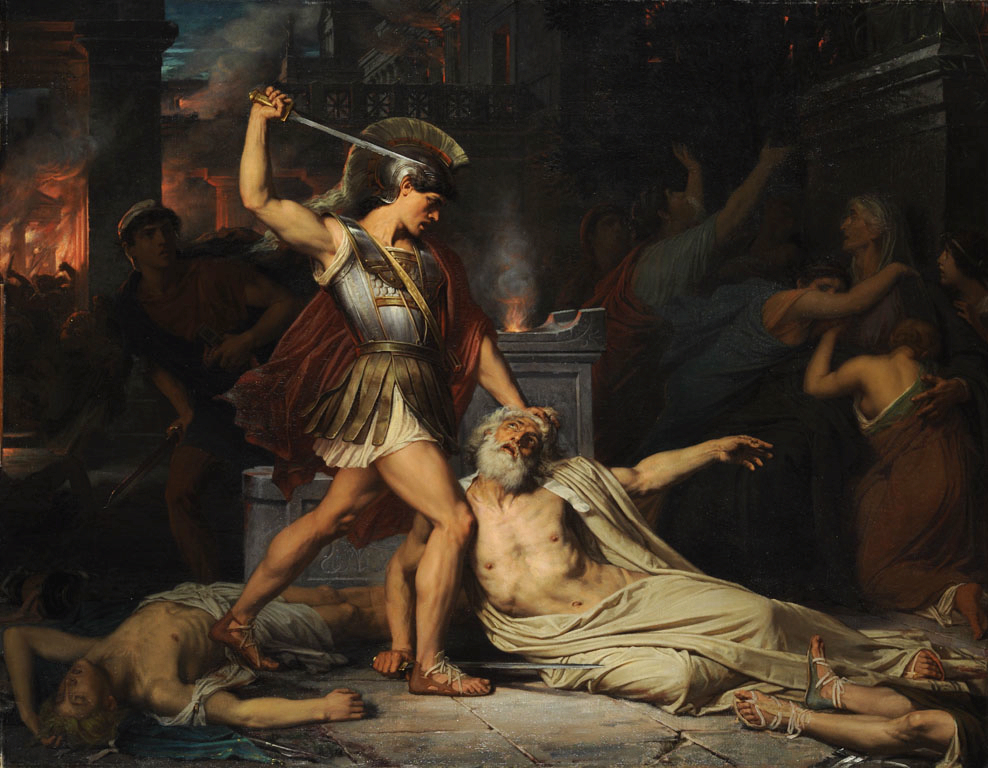
Above: the 1861 Prix de Rome winner: Jules Lefebvre “La Mort de Priam”
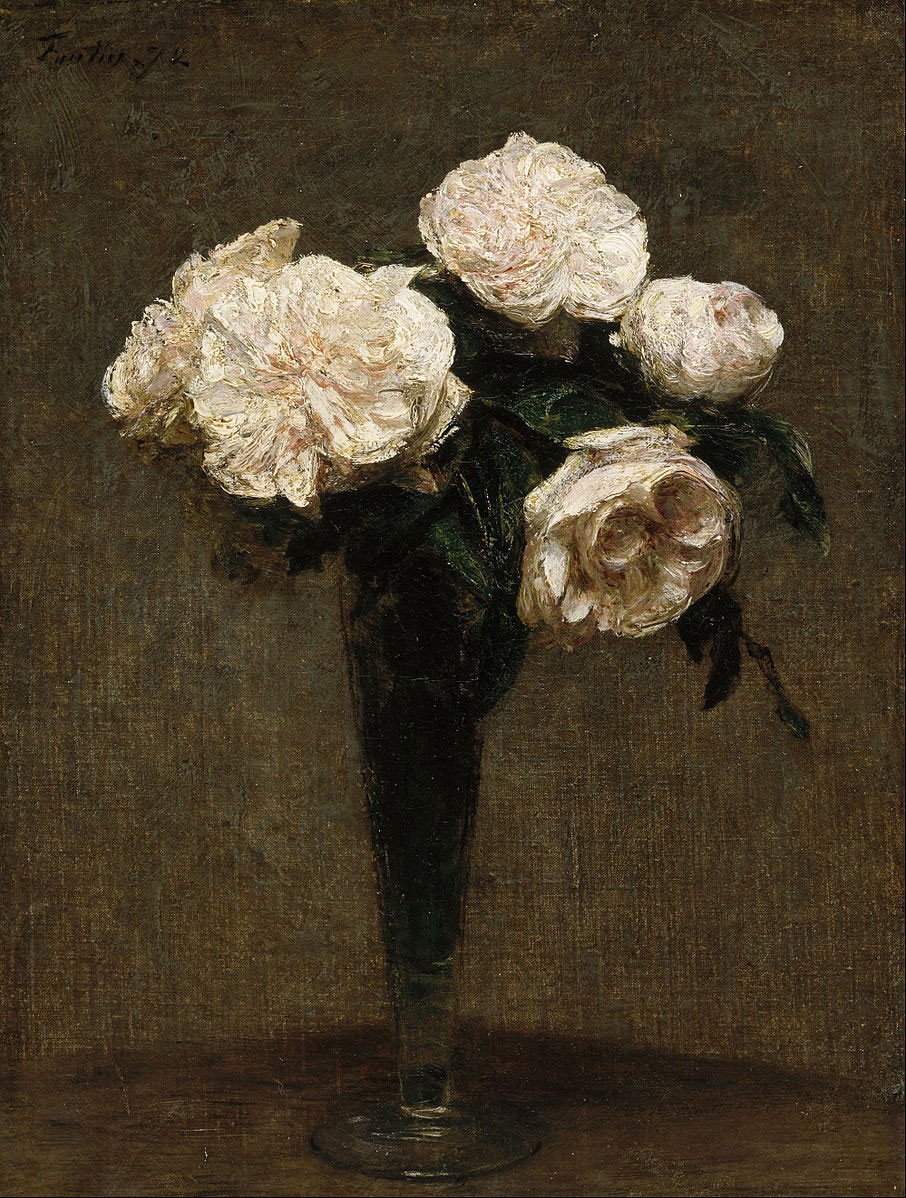
“Roses in a Vase” by Henry Fantin Latour
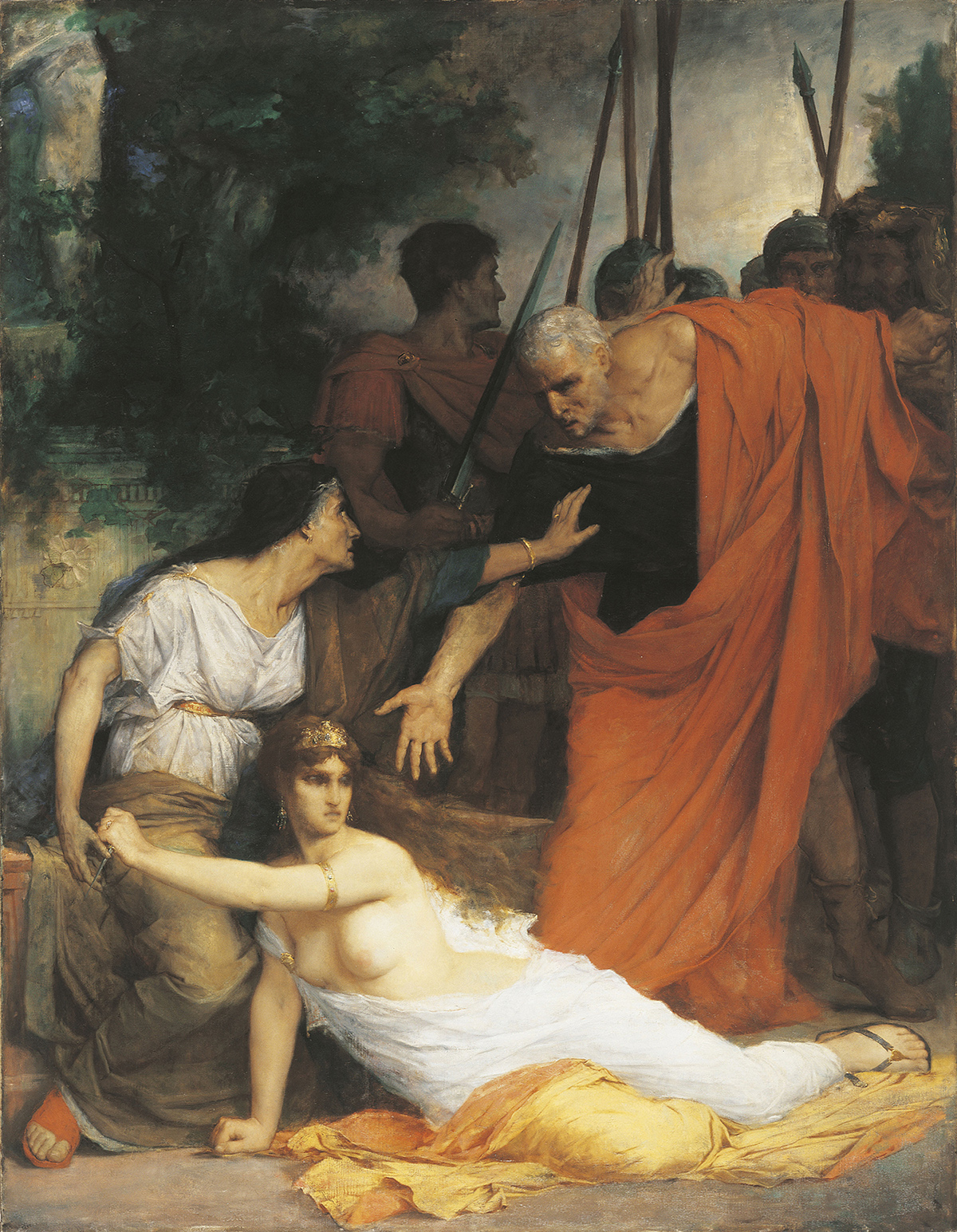
Above: the 1870 Prix de Rome winner: Fernand Lematte “La Mort de Messaline”
The Subject of Landscape
The subject of landscape was not yet considered a fine art work in itself unless it had figures within it to be considered a “great” work of art. The Salon’s acceptance was really the only way of becoming a known and selling artist at the time. When the rigorous Paris studio art schools would adjourn for spring or summer breaks many of the students set off to the countryside south of Paris to an ever popular area called Fontainebleau.
Above: Camille Corot “Forest at Fontainebleau” 1847 Approx. 48”x70”
Barbizon: A Painter’s Paradise
The forest area was known as a landscape painter’s paradise, with rolling scenery, small villages and the Château de Fontainebleau. A group of painters often gathered in a town south of Paris called Barbizon, located in the Fontainebleau forest. Artists such as Charles Daubigny, Théodore Rousseau, and Jean-François Millet among others had moved here in the first part of the 19th century and they chose not to follow strict Romanticism and styles admired by the Salon. They adopted the philosophy of Rousseau, “To hell with the civilized worlds, long live nature and old poetry!”

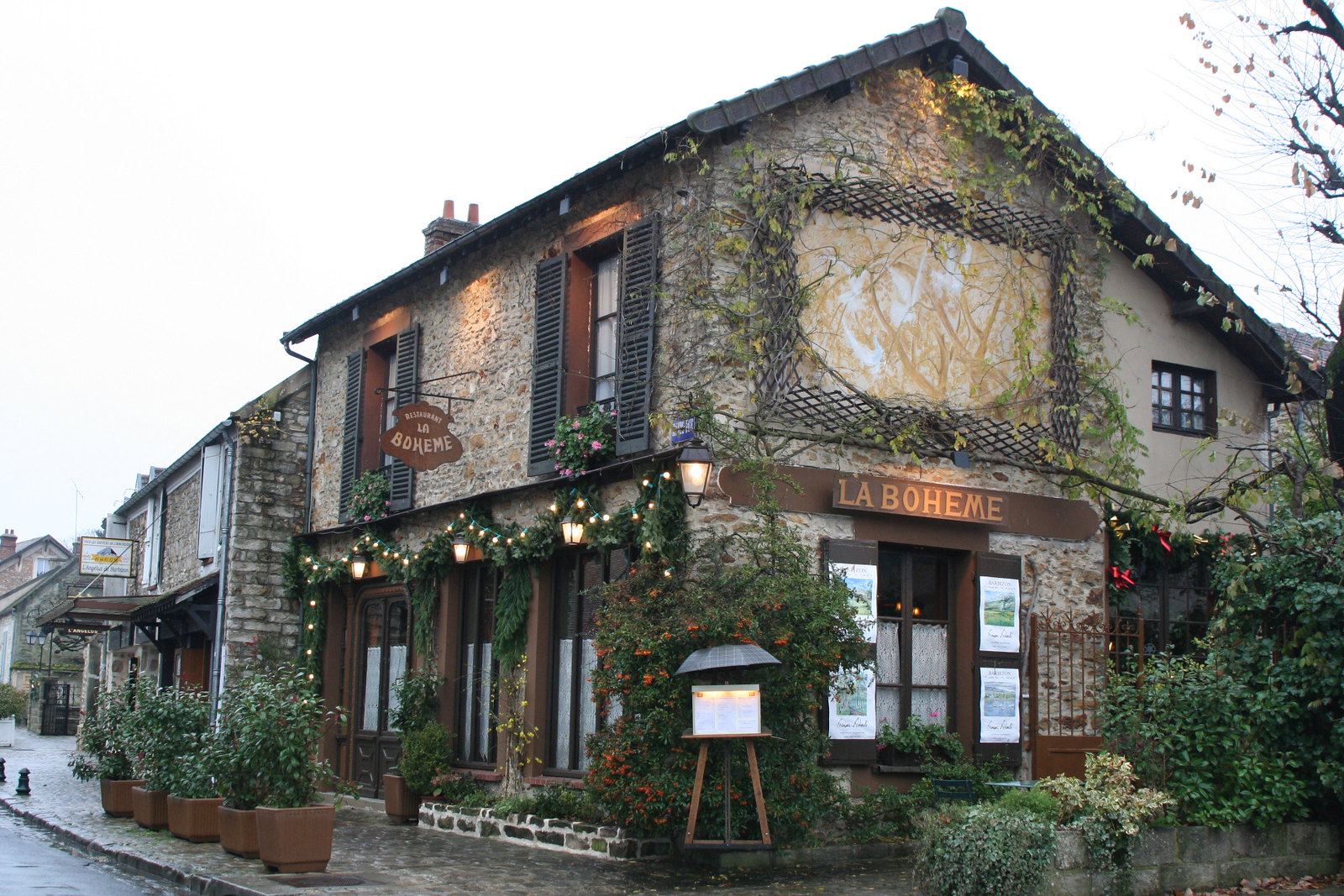
Above: The town of Barbizon
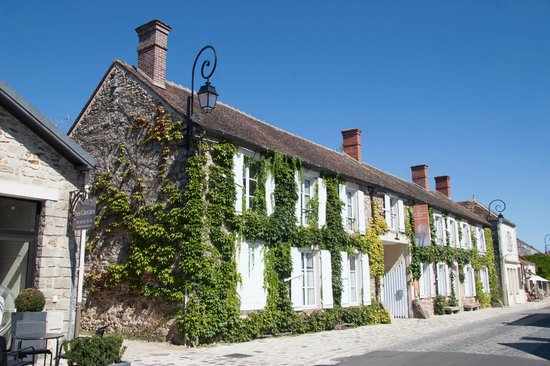
Above: Site of the Auberge Ganne where the artists stayed. It is now the museum of Barbizon.
The Birth of the Barbizon School
Their love of nature was in stark contrast to the urban life that dominated Paris at the time. This group was later called “The Barbizon School.” The artists captured their subjects on location, painting from life with a desire to express their feelings and challenge the rules. Their aim was to paint the landscape in realist style; and for its own sake. Based on the work of 17th century French, English and Dutch painters, the Barbizon artists approached their scenes with careful observation and a profound love of nature. Their work was still quite realistic but the narrative was different… the landscape was the main subject. They aimed to elevate the landscape to its own genre and not merely as a background in a work of art.
They chose the magnificent surroundings of Fontainebleau filled with stags, wild boars, rugged peaks, farmers, small hamlets, hundred year-old trees the size of mountains, and acres of dense forest, (which was often thought to be enchanted!) and brilliant dappled atmospheric light.
Quite a subject!
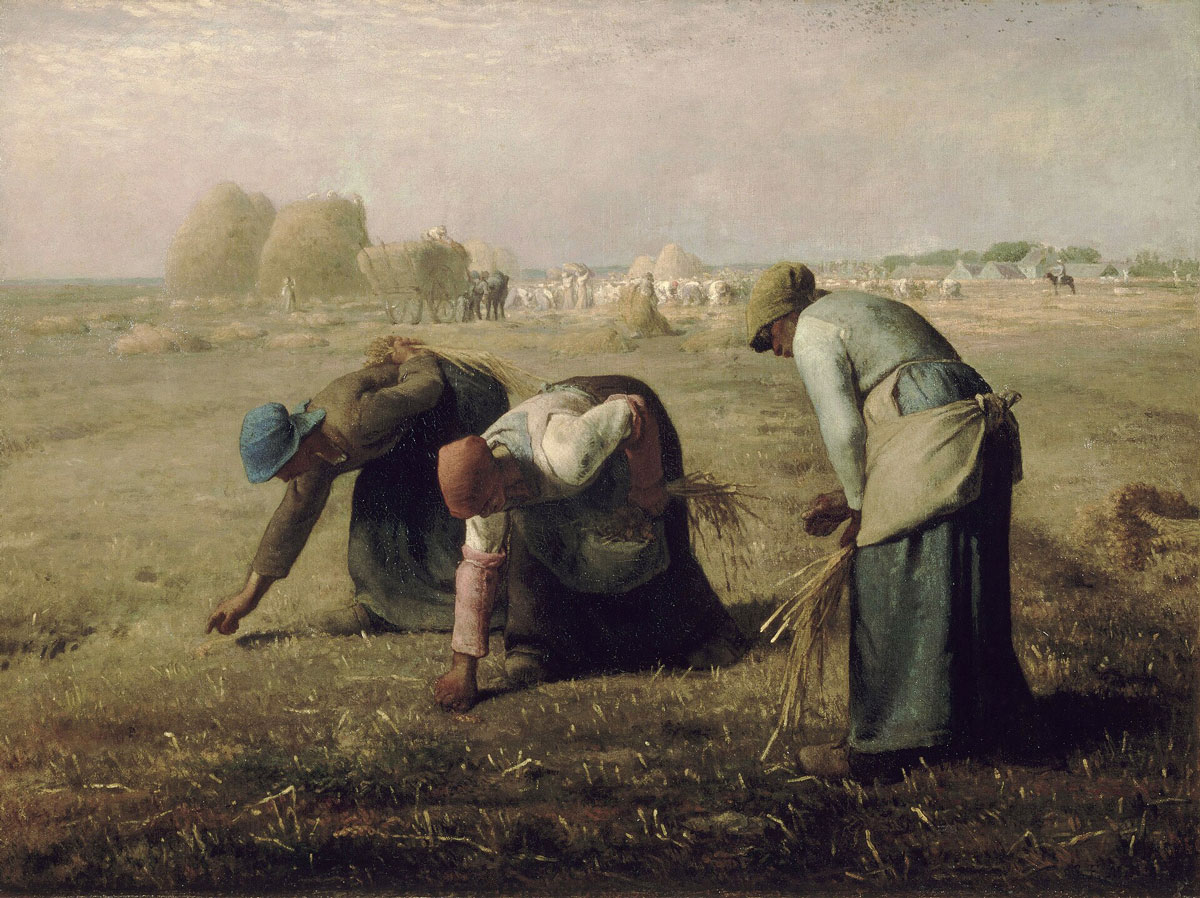
The Gleaners (1857) by Jean-François Millet
How the Railway Gave Rise to Plein Air Painting
In 1849 a railway line had already opened up to allow access to the area and it became popular for weekend jaunts. The accessibility of the countryside made possible by this train completely changed the relationship between urban man and nature. Writers and artists went back to their roots, quite literally. The royal court had even started to spend springtime at the Château de Fontainebleau and having a picnic in the woods was all the rage. Napoleon the 3rd, it was said, even attended an art show in the area and bought a painting for the Empress Eugénie. Famous writers such as Robert Louis Stevenson, Gustave Flaubert and George Sand also started to come to the forest to be inspired. They even wrote creative novels about the life of painters in the forest.
“Nous étions tous des artistes, nous avions presque tous l’âge des illusions… je me plais à imaginer que lorsque les jeunes d’aujourd’hui s’enfonceront dans la forêt, le souvenir de notre rire hantera longtemps ces bois.”
“We were all artists, almost all of us were of the age of illusions… I like to imagine that when today’s young people go deeper into the forest, the memory of our laughter will long haunt these woods.”
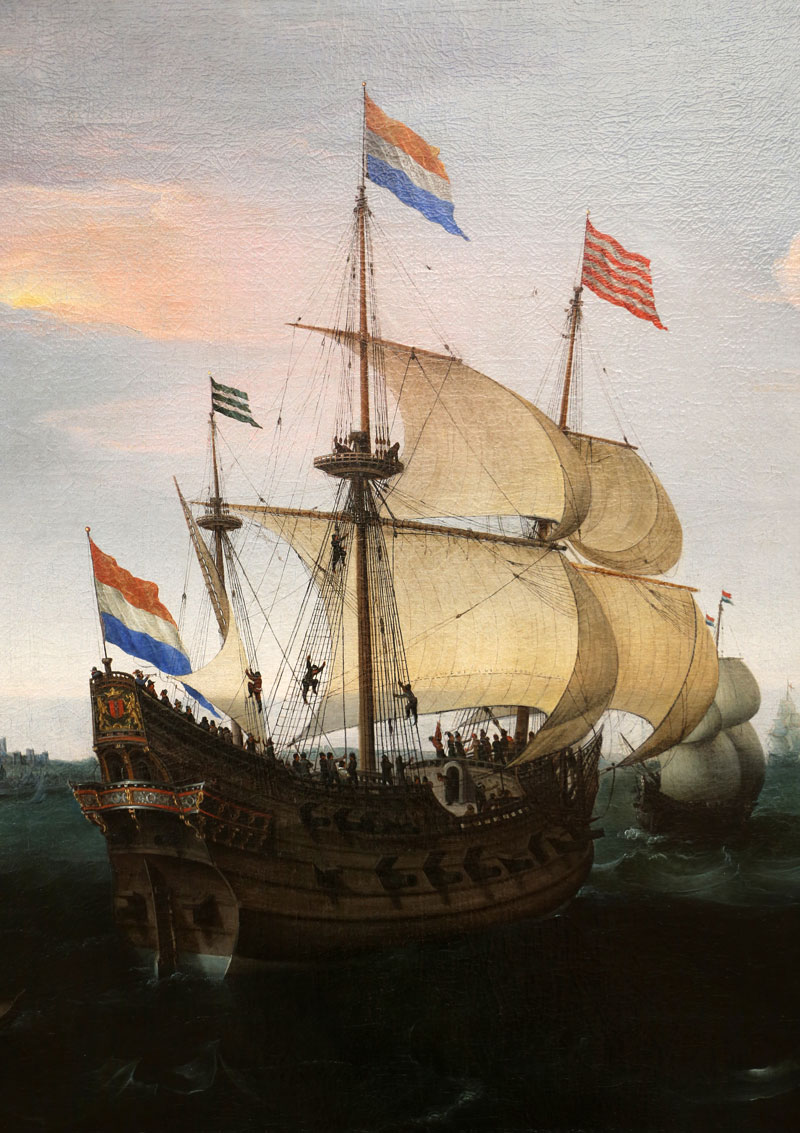
The Great Army of Landscape Painters
Painters by the hundreds arrived from France, Switzerland and even America (and today… the Americans in Paris in 2024!). An art critic from the time, Jules Castagnary wrote about “the great army of landscape painters” that was invading France. The sheer number of painters now painting Landscape as a subject was impressive and this started to influence the Salon jury. The initial resistance to the idea of showing landscape only paintings, was, with much controversy, finally accepted by popular demand. It might have helped that the Barbizon artist, Charles Daubigny, actually sat on the jury! This new acceptance of landscapes was encouraging to young artists who enjoyed the subject and to the plein air painters that emerged. Auspiciously, it came at a time when France was trying to renew its strong post-revolutionary national history and the celebrated beauty of the French landscape, and these emerging paintings went hand-in-hand with this aim.
Right: Hendrick Cornelisz, detail of “Arrival of a Dutch Three master at Schloss Kronberg”
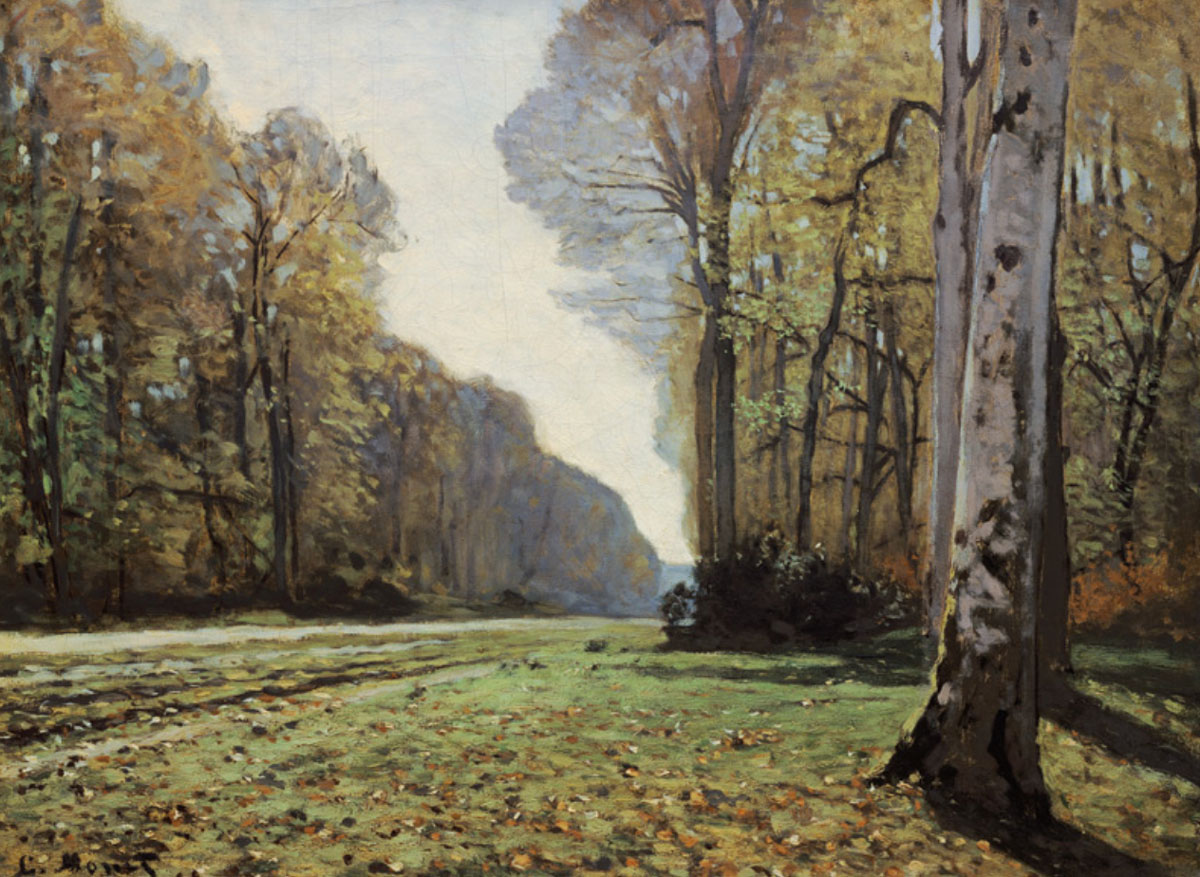
Claude Monet “The Route de Bas Bréau” in the Chailly-en-Bière Fontainebleau forest. Musée du Louvre. Approx 35”x 55”
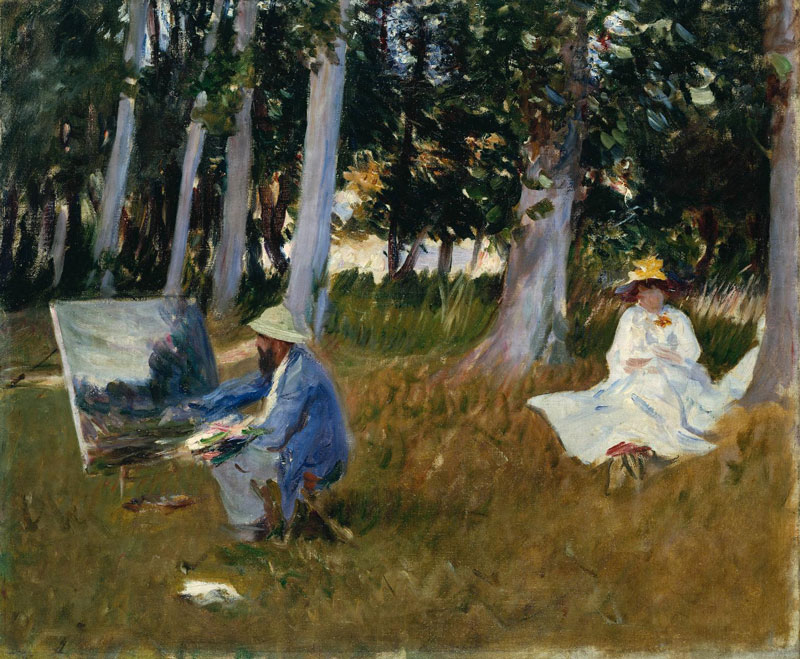
Oil Paint Gets Tubed
Around the same time in coastal Normandy, artists such as Boudin and Jongkind, had been teaching the young Claude Monet about painting en plein air, on location by the sea. Advances in art supply technology were also happening at this time, and the invention of the metal tube made it possible for artists to carry oil paints easily on location! Renoir had been often and knew the area well. Young Paris studio artists such as Monet, Bazille and Sisley soon took their turn at painting in the forest and started to paint en plein air in the ‘alla prima’ style as well. The artists often painted alla prima, the direct method, which was innovative and very different from their classical methods and training.
Claude Monet Painting by the Edge of a Wood (1885) by John Singer Sargent. Oil on canvas. 54.0 × 64.8 cm. Tate Gallery, London.
Working in Nature
While the founding artists stayed in Barbizon, many at the Auberge Ganne which is now a museum in Barbizon, even more artists, Monet, Sisley and others stayed in the village of Chailly-en-Bière, just a mile from Barbizon. They worked directly in nature where they truly savored the effects of light between the trees. Carrying their wooden easels, leather bags, and supplies, these and hundreds of other artists were seen every weekend in the forest. Working on location under the great oaks, the experience of painting out of doors was new and exciting and it naturally inspired a whole new genre of art about light and its many effects on nature. This change in the subject, and later even the “style” of landscape painting, took place from the early 1860’s to the 1890’s.
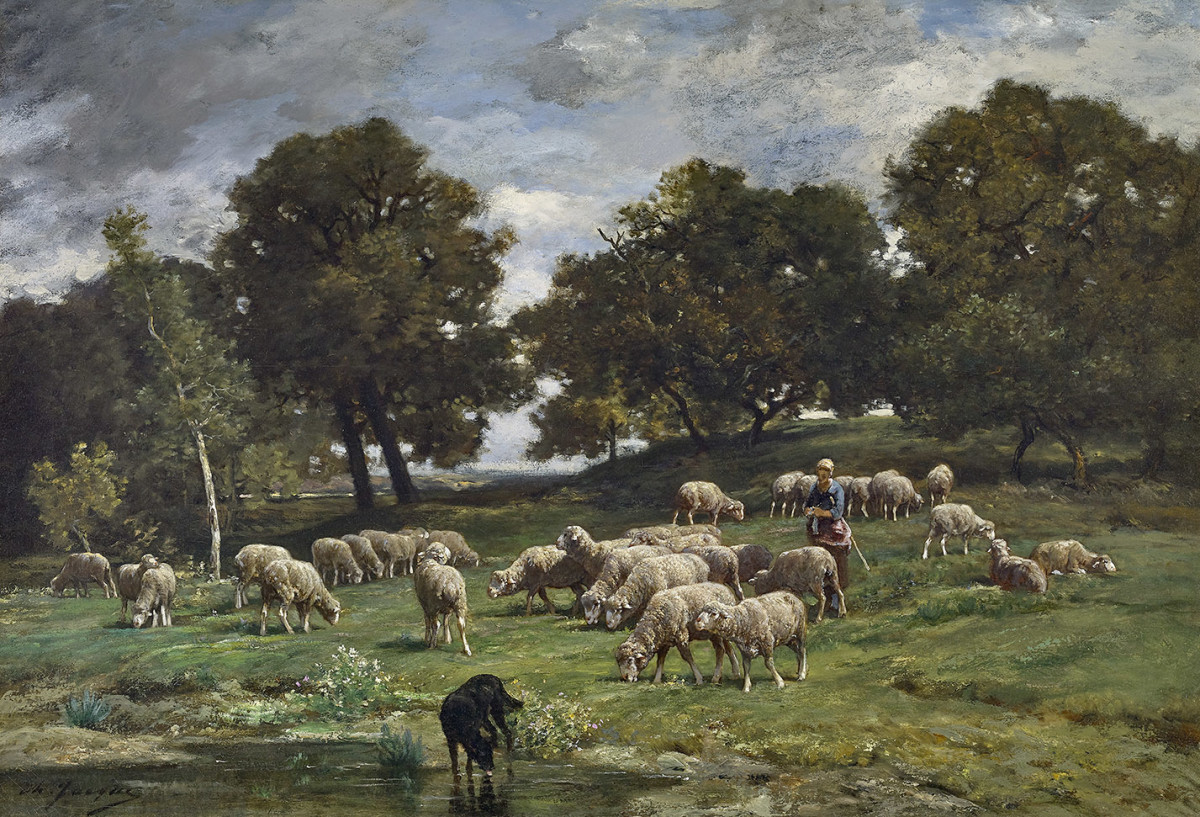
Charles-Émile Jacque, Shepherdess and Her Flock, 1878
Monet’s Le Déjeuner Sur L’Herbe
Here is an intriguing story about a painting from this time, which can be found in the Musée D’Orsay, and that we will be seeing in person during our scheduled Americans in Paris workshop. Inspired by the first famous “Le Déjeuner sur l’herbe”, a painting created by Édouard Manet and shown in the Salon des Refusés in Paris, Claude Monet attempted to produce a large scale painting in the Fontainebleau forest under natural dappled light. He executed many studies with figures having a picnic en plein air and later created a “Le Déjeuner sur l’herbe” painting of his own. The work was so large it was cut up in 3 or 4 pieces in order to be painted from life, on location. He even included Renoir and Bazille as models for figures in the scene. Courbet is also thought to be one of the figures in the work. It was set to measure 4.65 meters by 6 meters, that is approximately 15 by 20 feet. The painting however was never completed. After laboring tirelessly with multiple sittings to create it from life, Monet had to leave his work behind. He did not have enough money to pay the innkeeper where he stayed and was asked to leave the large canvases. Recovering them many, many years later he found they were kept in the cellar and partially ruined with mold. Monet cut up and saved some pieces. His full scene study resides at the Pushkin Museum in Moscow, but you can find the large pieces of this unfinished final work in the Musée D’Orsay. It is hung as multiple framed pieces to make a whole large-scale work. It was an immense undertaking to paint at such a large scale from life in the forest, and was sadly never completed.
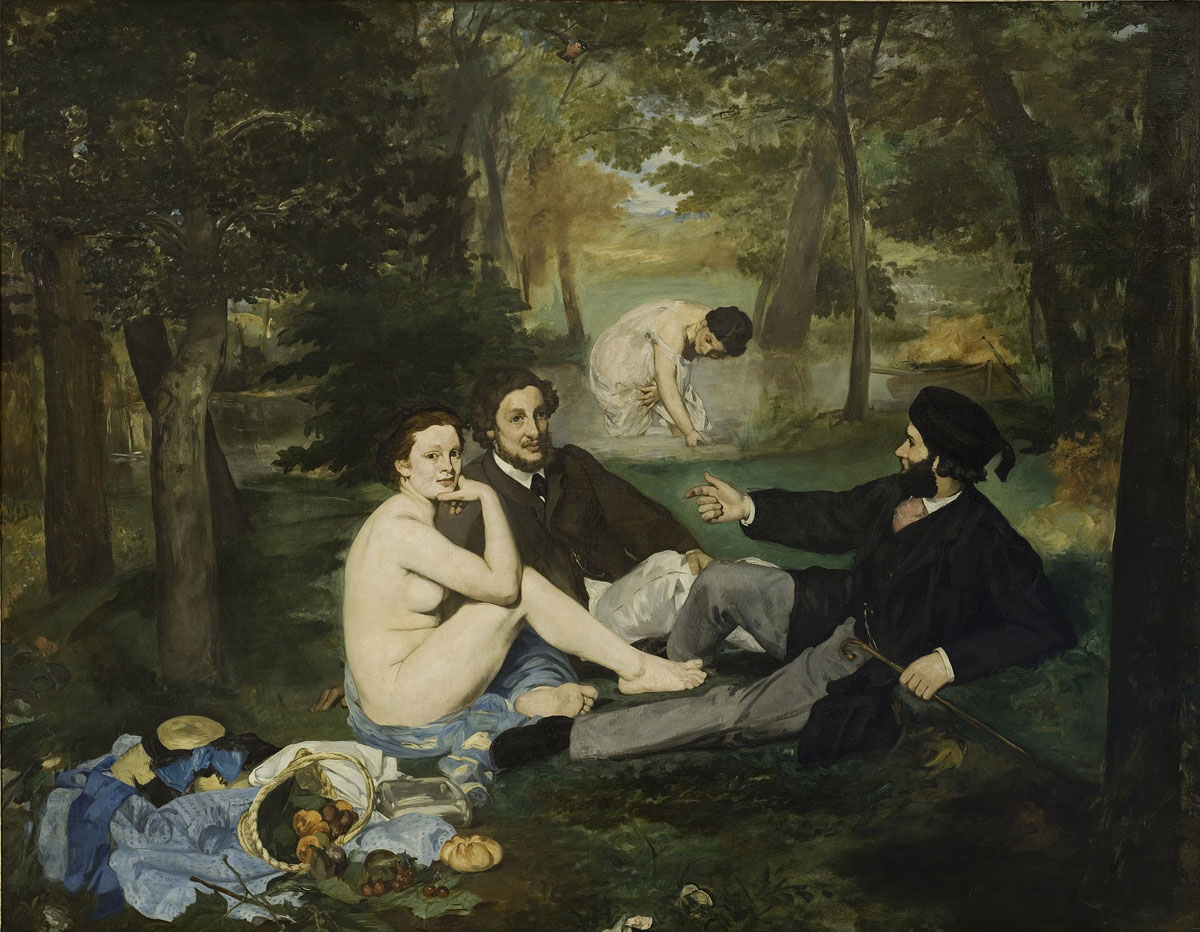
Above: “Le Déjeuner sur l’herbe” 1863 by Edouard Manet
The Influence of the Barbizon Artists
The influence that the Fontainebleau forest and the Barbizon group provided for the Paris art world was immeasurable. These artists inspired works and novels, and were the catalyst for adding landscape as a subject to the famous Paris Salon. What they learned and created in the forest, beginning with the first influences of the Barbizon plein air painters, is credited to have given birth to the whole Impressionist movement, now a central component of French culture. Impressionism has become one of the most fascinating aspects of French national art history. At length, these famous dappled-light paintings created in France, made their way to New York and further influenced an entire genre and eight different schools of American Impressionists.
Americans in Paris: Fontainebleau
The Americans in Paris Workshop in April – May, 2024 and the Petite Retreat which directly follows the workshop, aim to bring some of this wonderful history, inspiration, and new subject matter to your works! Join us as we recreate these magical moments together in the enchanted forest of Fontainebleau. Read the full description here.
Blogger: Vanessa Françoise Rothe
In addition to her pursuit as a fine artist, Vanessa Rothe is also a curator, editor/writer, lecturer, and art dealer. She owns Vanessa Rothe Fine Art Gallery, in Laguna Beach California for the past 12 years, showcasing international contemporary realism and Impressionism. It was Rothe’s initiative to create the Americans in Paris fine art project starting in 2015, with travel, workshops and bi-continental exhibitions at such venues as the Salmagundi Club in New York in 2015, 2016, 2023, at VRFA Laguna Beach in 2021, and at Arcadia Contemporary, and Galerie Prince du L’Oeil in Paris, 2018. This fine art project is currently in its eighth year, and thanks to its partnership with Workshops in France, the American in Paris workshops are now open to the public.
Check out more blogs about art workshops, tips and hacks for artists traveling in France and Scotland.
Alizarin Crimson the Fugitive
Did you know Alizarin, one of the most common and beloved colors in a painter’s kit, was originally a cheaper replica of another color? Until recently artist’s didn’t know that the beautiful reds they were using were fugitive and would fade over time! Many famous works have suffered the same fate of fading colors.
Les Carrières des Lumières Explores Venice 2022
This year at Les Carrières des Lumières, the famous underground quarry is once again transformed into a theater of mind-blowing proportions through the wizardry of technology, showing projected masterworks from Venice as well as the work of Yves Klein in Infinite Blue onto its limestone walls.
George Howard: Photographer at Large in Provence
Occasionally we meet a non-painting partner whose own work inspires the rest of us. The photographs by George Howard are immediately identifiable for their graphic color and beautiful light, the same qualities that artists seek in our work.
